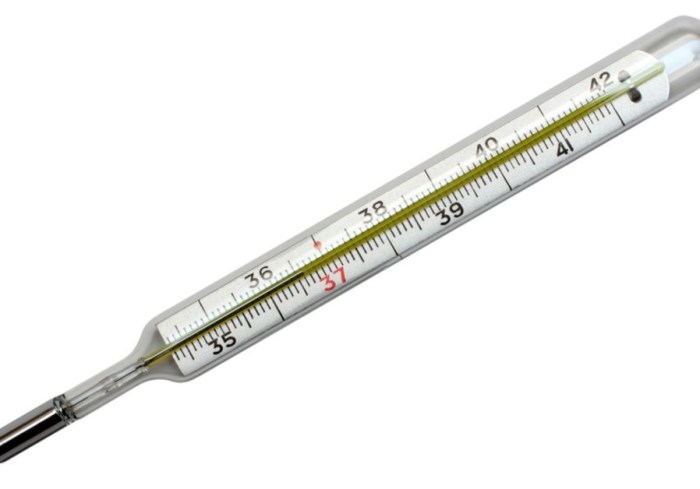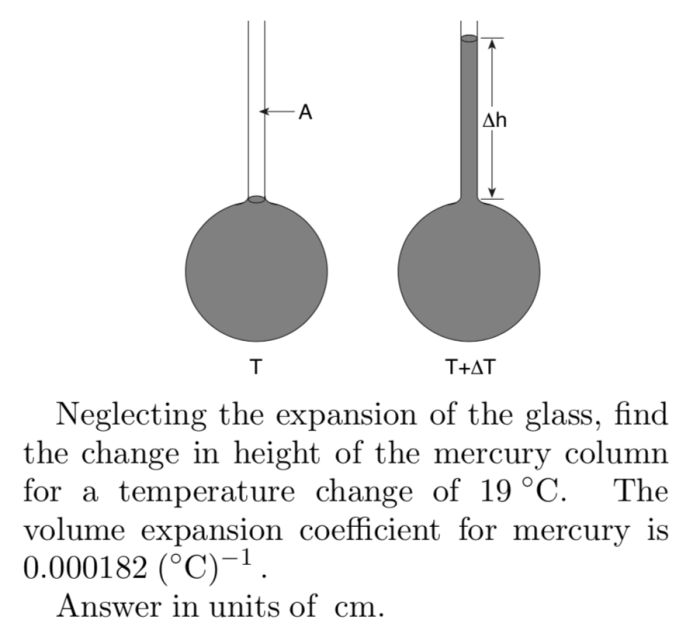A mercury thermometer is constructed as shown, an instrument designed to measure temperature using the expansion and contraction of mercury within a sealed glass tube. Its unique construction and working principle have made it a reliable tool in various fields, but concerns about mercury toxicity and environmental impact have led to the exploration of alternatives.
This article delves into the construction, working principle, advantages, disadvantages, and applications of mercury thermometers, providing a comprehensive overview of this important scientific instrument.
Construction of a Mercury Thermometer
A mercury thermometer is constructed using specific materials and undergoes a precise process to ensure accurate temperature measurement. The main components include a glass bulb, a capillary tube, and mercury.
Materials Used
- Glass Bulb:The bulb is made of thin-walled glass, designed to hold the mercury.
- Capillary Tube:A narrow, cylindrical glass tube extends from the bulb, allowing the mercury to rise and fall with temperature changes.
- Mercury:Mercury is a liquid metal with a high coefficient of thermal expansion, making it ideal for measuring temperature.
Filling Process
The mercury thermometer is filled by heating the bulb and drawing a vacuum inside. As the bulb cools, the mercury is introduced and rises into the capillary tube.
Calibration
After filling, the thermometer is calibrated against a known temperature reference, typically the freezing point of water (0°C) and the boiling point of water (100°C). Marks are etched on the capillary tube corresponding to these temperatures, creating a scale for measuring temperature.
Working Principle of a Mercury Thermometer

A mercury thermometer operates on the principle of thermal expansion. As the temperature of the environment increases, the mercury expands and rises in the capillary tube. Conversely, as the temperature decreases, the mercury contracts and falls.
Temperature Measurement
The height of the mercury column in the capillary tube corresponds to the temperature. The higher the temperature, the greater the expansion of mercury and the higher the mercury rises in the tube.
Accuracy and Precision
Mercury thermometers are generally accurate and precise, providing reliable temperature measurements. However, they can be affected by factors such as atmospheric pressure and the angle of the thermometer.
Advantages and Disadvantages of Mercury Thermometers

| Advantages | Disadvantages |
|---|---|
| High accuracy and precision | Contains toxic mercury |
| Wide temperature range | Fragile and easily broken |
| Long lifespan | Requires proper disposal |
| Easy to read | Environmental concerns |
Safety Concerns
Mercury is a toxic substance, and broken mercury thermometers pose a health risk. Mercury vapor can be inhaled or absorbed through the skin, causing neurological damage and other health issues.
Environmental Impact
Discarded mercury thermometers can contaminate the environment. Mercury can accumulate in soil and water, harming wildlife and humans.
Applications of Mercury Thermometers

Mercury thermometers are commonly used in various industries and applications due to their accuracy and wide temperature range.
Medical Applications
- Measuring body temperature
- Monitoring temperature during medical procedures
Industrial Applications
- Monitoring temperatures in manufacturing processes
- Calibrating other temperature-measuring devices
Scientific Applications
- Measuring temperatures in laboratory experiments
- Calibrating other thermometers
Limitations, A mercury thermometer is constructed as shown
Mercury thermometers are not suitable for use in applications where there is a risk of breakage or where non-toxic alternatives are required.
Alternatives to Mercury Thermometers: A Mercury Thermometer Is Constructed As Shown
| Type | Accuracy | Response Time | Cost |
|---|---|---|---|
| Digital Thermometer | High | Fast | Moderate |
| Infrared Thermometer | Moderate | Fast | High |
| Alcohol Thermometer | Lower than Mercury | Slower | Low |
| Thermistor Thermometer | High | Fast | Moderate |
Advantages and Disadvantages
Alternative thermometers offer advantages such as safety, convenience, and cost-effectiveness. However, they may have lower accuracy or response times compared to mercury thermometers.
Q&A
What are the materials used to construct a mercury thermometer?
A mercury thermometer typically consists of a glass tube, mercury, and a scale.
How is a mercury thermometer filled with mercury?
Mercury is drawn into the glass tube under vacuum, and the open end is then sealed.
How is a mercury thermometer calibrated?
Mercury thermometers are calibrated by comparing their readings to a reference thermometer at specific temperatures.